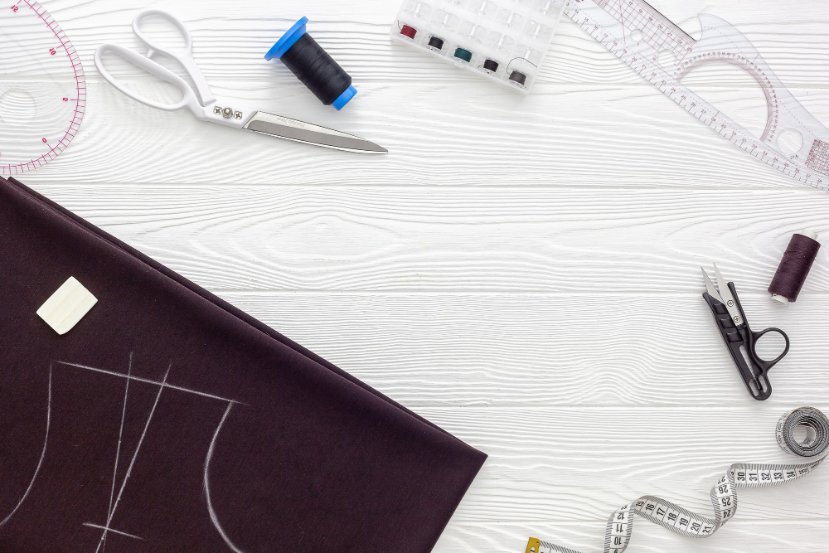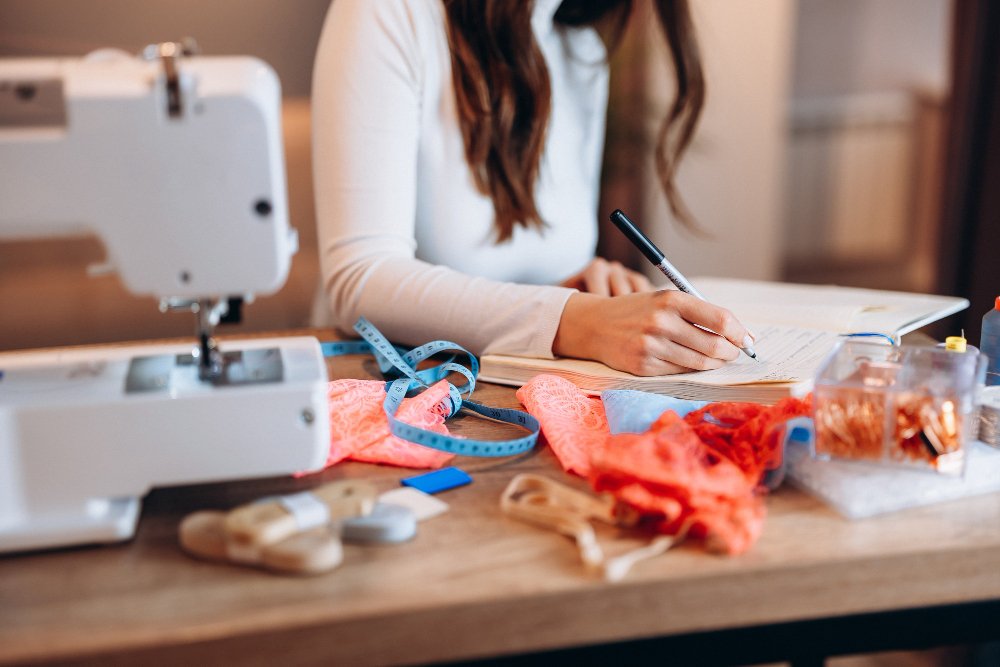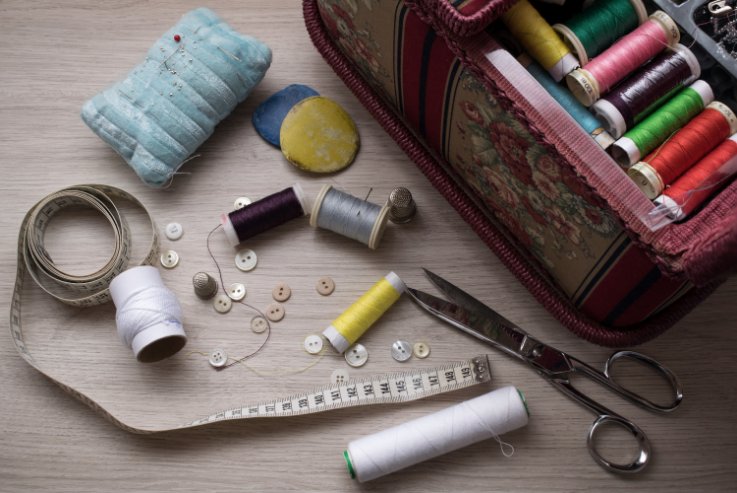Your Complete Guide to Mastering Sewing with Confidence and Creativity
Table of Contents
- Why Start Sewing in 2025?
- Your First Steps: What to Sew First
- Essential Tools and Beginner Sewing Kit
- Choosing the Right Fabric
- Understanding Sewing Patterns
- Best Beginner Projects and Free Patterns
- Building Skills Progressively
- Common Problems and Solutions
- Building Your Sewing Community
- Frequently Asked Questions
Why Start Sewing in 2025?
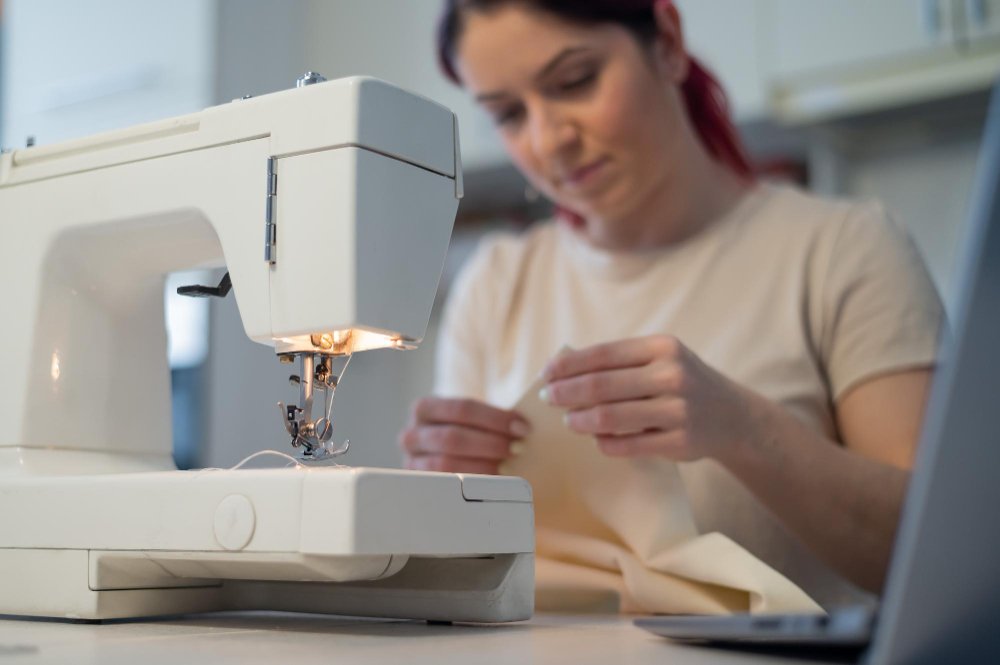
Creating your own clothes combines creativity with practical skills in ways that feel both empowering and fun. Whether you want to refresh your wardrobe, explore a hands-on hobby, or join the sustainability movement, starting with simple projects builds confidence while teaching core techniques.
2025 Sewing Revolution: With 30 million Americans now sewing and online pattern sales jumping 25% since 2019, you’re joining a thriving community focused on sustainability, creativity, and self-expression.
Many new crafters find success by selecting designs with clear instructions and minimal complexity. These projects help you master basics like straight seams, fabric handling, and proper measurements. As you progress, you’ll discover how these fundamentals apply to more advanced creations.
Can I Learn Sewing on My Own?
Absolutely! Self-taught sewers make up a huge portion of the community. With today’s online resources, video tutorials, and supportive communities, learning at home is easier than ever. Most beginners can complete their first simple project in a weekend.
How Fast Can I Learn Sewing?
Your timeline depends on practice and goals:
- First project: 1-2 weekends (tote bag or pillowcase)
- Basic skills: 2-3 months with regular practice
- Simple garments: 4-6 months
- Intermediate techniques: 8-12 months
Essential tips every beginner sewer wishes they knew from the start
Find Your Perfect First Project!
Not sure where to start? Use our interactive tool to discover the best beginner sewing pattern for your skill level and interests.
Take the Beginner Sewing QuizYour First Steps: What to Sew First
What is the Most Beginner Friendly Thing to Sew?
A simple tote bag wins hands down. It uses only straight seams, doesn’t require precise fitting, and gives you something useful right away. Even better, mistakes often add character rather than ruining the project.
What is the First Thing a Beginner Should Sew?
Start with these projects in order:
1. Practice Squares
Sew fabric scraps together to practice straight seams, turning corners, and basic machine operation. No pressure, just learning!
2. Simple Pillowcase
Learn straight seams and basic finishing. Uses about 1 yard of fabric with minimal waste.
3. Basic Tote Bag
Combines straight seams with basic construction. Creates something you’ll actually use.
4. Elastic Waist Skirt
Your first wearable garment! Teaches basic fitting and finishing techniques.
Five beginner-friendly wearable projects to build your confidence
What is the Easiest Piece of Clothing to Start Sewing?
An elastic-waist skirt takes the crown. Here’s why it’s perfect for beginners:
- No zippers, buttons, or complex closures
- Elastic waistband adjusts to your size
- Simple A-line shape is forgiving
- Can be made from easy fabrics like cotton
- Teaches hemming and basic garment construction
How to Sew Straight for Beginners?
Straight stitching is your foundation skill. Master it with these tips:
Machine Setup
- Use your machine’s seam guides
- Place tape as a visual reference
- Adjust stitch length to 2.5mm
- Check thread tension
Technique Tips
- Go slow and steady
- Watch the seam guide, not the needle
- Keep fabric edges aligned
- Practice on paper first
Common Mistakes
- Going too fast
- Pulling or pushing fabric
- Inconsistent seam allowances
- Not securing thread ends
Learn more about perfecting your straight stitch technique with detailed guides.
Essential Tools and Beginner Sewing Kit
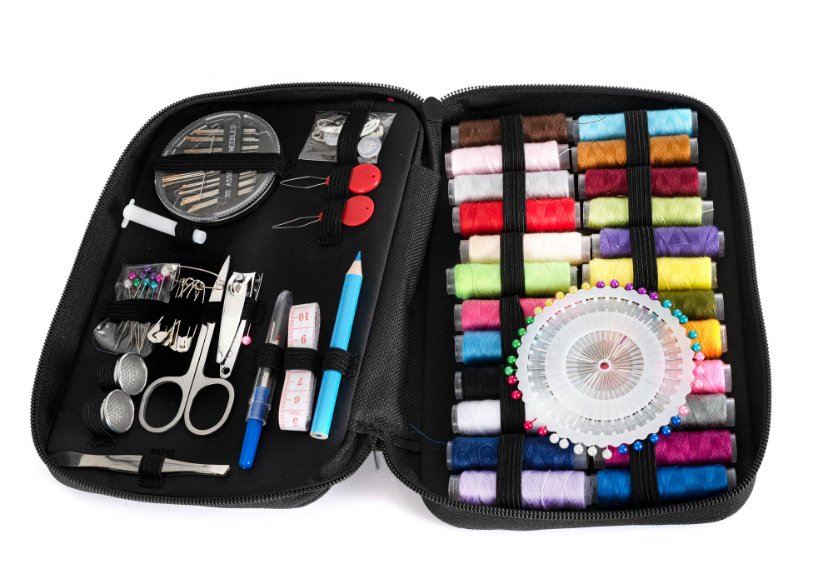
What Should Be in a Beginner Sewing Kit?
Building your toolkit doesn’t have to break the bank. Start with these essentials:
| Tool | Purpose | Priority Level | Approximate Cost |
|---|---|---|---|
| Sharp Fabric Scissors | Clean, accurate cuts | Essential | $15-30 |
| Glass-Head Pins | Won’t melt under iron heat | Essential | $5-10 |
| Seam Ripper | Fix mistakes safely | Essential | $3-8 |
| Measuring Tape | Accurate measurements | Essential | $3-5 |
| Iron & Board | Professional finishing | Very Important | $30-100 |
| Fabric Markers | Pattern transfers | Important | $5-15 |
Build Your Perfect Sewing Kit!
Get a customized list of essential supplies based on your projects and budget.
Generate Supply ListWhat is a Good Basic Sewing Machine for Beginners?
Choose a machine that grows with your skills without overwhelming you:
Must-Have Features
- Adjustable speed control
- Automatic threading help
- Basic stitches (straight, zigzag)
- Free arm for sleeves
- Good lighting
Recommended Brands
- Brother: User-friendly, reliable
- Singer: Good value, widely available
- Janome: High quality, durable
- Bernina: Premium option
For detailed machine selection help, check our guide to choosing the right sewing machine.
What to Buy to Begin Sewing?
Your complete starter shopping list:
Budget Breakdown: Plan to spend $150-300 for a complete beginner setup including machine, tools, and first project supplies.
- Sewing Machine: $80-200 for a good beginner model
- Basic Tools: $30-50 for scissors, pins, seam ripper, tape
- Iron: $25-50 for a basic steam iron
- Fabric: $20-40 for your first few projects
- Thread: $10-20 for basic colors
- Notions: $15-25 for pins, bobbins, needles
Learn more about building your sewing supply collection.
Choosing the Right Fabric
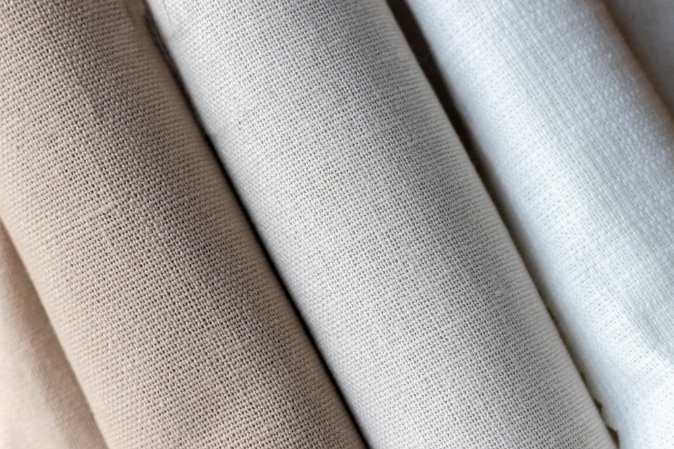
What are the Four Things to Consider When Choosing Fabric?
Smart fabric selection makes or breaks your project. Consider these key factors:
1. Fiber Content
Natural fibers like cotton are easiest to work with. They press well, don’t shift during cutting, and forgive minor mistakes.
2. Fabric Weight
Medium-weight fabrics offer the best balance. Too light fabrics slip around; too heavy ones are hard to manage.
3. Stretch Factor
Start with woven (non-stretch) fabrics. Knits require special techniques and can frustrate beginners.
4. Care Requirements
Choose machine-washable fabrics. Dry-clean-only materials add complexity and ongoing costs.
Find Your Perfect Fabric Match!
Not sure which fabric to choose for your project? Take our interactive quiz to get personalized recommendations.
Find Perfect FabricWhat is the Easiest Material to Learn to Sew?
Cotton quilting fabric takes the prize for beginners:
- Stable: Doesn’t stretch or shift while cutting
- Forgiving: Hides minor tension issues
- Predictable: Presses well and holds creases
- Affordable: Great for practice without big investment
- Available: Wide selection of colors and prints
Which Type of Fabric is Most User-Friendly for Beginners?
Here’s your beginner-friendly fabric hierarchy:
| Fabric Type | Best For | Difficulty Level | Why It Works |
|---|---|---|---|
| Cotton Quilting | First projects, bags, simple tops | Easiest | Stable, forgiving, easy to press |
| Cotton Twill | Pants, structured garments | Easy | Durable with nice body |
| Chambray | Shirts, casual dresses | Medium | Soft but stable |
| Linen Blends | Summer garments | Medium | Breathable, hides flaws |
What Fabric Should You Stay Away From?
Avoid these challenging materials until you build confidence:
- Silk: Slippery and expensive to practice on
- Knits: Require special needles and techniques
- Velvet: Pile fabric that shifts and shows pins
- Leather/Vinyl: Can’t be ripped out if you make mistakes
- Sheer fabrics: Show every imperfection
- Heavy canvas: Hard on beginners’ machines
Learn more about different fabric types and their uses in our comprehensive guide.
Understanding Sewing Patterns
What are the Big 4 Sewing Patterns?
The “Big 4” pattern companies dominate the market with accessible designs:
| Company | Best Known For | Beginner Friendly? | Average Price |
|---|---|---|---|
| Simplicity | Clear instructions, wide variety | Excellent | $8-18 |
| McCall’s | Fashion-forward, good fit | Very Good | $10-20 |
| Butterick | Classic styles, detailed guides | Good | $12-22 |
| Vogue | Designer patterns, couture techniques | Advanced | $15-30 |
What is a Basic Sewing Pattern Called?
Basic patterns go by several names:
- Block patterns: Basic fitted shapes without design details
- Slopers: Foundation patterns for creating new designs
- TNT (Tried and True): Patterns you’ve successfully made
- Basic patterns: Simple designs with minimal construction
Which are the Easiest Sewing Patterns to Follow?
Look for patterns with these beginner-friendly features:
Pattern Features
- Fewer than 10 pattern pieces
- Step-by-step photos
- Beginner skill level marking
- Clear instruction layout
Construction Elements
- Minimal or no darts
- Straight seams only
- Simple closures (elastic, ties)
- Basic necklines and hemlines
What is the Golden Rule Sewing Pattern System?
The golden rule is simple: “Measure twice, cut once.” This means:
- Always double-check your measurements
- Verify pattern piece placement before cutting
- Check grain lines and fold lines
- Test fit with muslin if unsure
- Take your time with layout and cutting
Learn to decode pattern markings with our guide on reading sewing patterns.
Best Beginner Projects and Free Patterns
Here’s your curated collection of 25+ free patterns, organized from easiest to more challenging. Each pattern includes detailed instructions and is perfect for building specific skills.
Top 10 beginner-friendly patterns to start your sewing journey
Free Pattern Collection – Organized by Skill Level
Note: These patterns are recommended examples. For actual free patterns, visit the websites mentioned or check the external links provided throughout this guide.
Complete Beginner (First Projects)
- Pillowcase: Learn straight seams – Tutorial available
- Basic Tote Bag: Practice corners and handles
- Simple Apron: Add ties and hems
- Fabric Coasters: Quick success project
- Napkins: Perfect hems practice
Find these patterns at:
- National Sewing Circle
- Craftsy Free Patterns
- Local fabric store classes
Confident Beginner (Simple Garments)
- Elastic Waist Skirt: First wearable garment
- Simple Tank Top: Basic garment fitting
- Pajama Shorts: Comfortable construction
- Kimono Cardigan: Loose-fitting elegance
- Pull-On Pants: Easy comfort wear
Pattern Sources:
- Simplicity “Learn to Sew” collection
- McCall’s beginner patterns
- Independent designers’ free offerings
Advanced Beginner (Skill Builders)
- Shift Dress: First structured dress
- Button-Up Shirt: Collars and cuffs
- A-Line Skirt with Zipper: Closure practice
- Lined Tote: Professional finishing
- Sleep Set: Matching pieces
Where to Find:
- Pattern company websites during sales
- Sewing blogs’ free pattern Friday posts
- YouTube sew-along series
2025 Sustainability Focus: Many of these patterns include zero-waste tips and suggestions for using fabric scraps. Join the eco-sewing movement!
Getting Started: Begin with one project from the “Complete Beginner” section. Master it completely before moving to the next skill level.
Free Pattern Resources
While we don’t host pattern files directly, here are the best places to find quality free patterns:
- National Sewing Circle: Free tutorials and basic patterns
- Craftsy: Free patterns with membership
- Mood Fabrics: Free Friday pattern releases
- Pattern Review: Community-shared free patterns
- Local Libraries: Often have pattern collections you can borrow
Plan Your Perfect Sewing Project!
Get a customized project plan with fabric recommendations, cost estimates, and timeline.
Plan My ProjectEssential Beginner-Friendly Sewing Patterns to Start With
These curated patterns balance technique-building with wearable results:
Dresses and Tops for Easy Sewing
The Fen Dress & Top teaches bias binding and curved pockets through its forgiving silhouette. Seamwork’s Kenedy Dress elevates special occasions with clean lines that hide stitching imperfections. For versatile layering, Made by Rae’s Ruby Top uses gathered details that build confidence.
Pants, Skirts, and Simple Bottoms
Sewaholic’s Rae Skirt skips complex closures with an elastic waistband that adapts to your measurements. Made by Rae’s Luna Pants solve the “pajama pants” look with tapered legs and polished drape.
| Pattern Name | Type | Key Skills Learned | Time Investment |
|---|---|---|---|
| Basic Tote Bag | Accessory | Straight seams, corners, handles | 2-3 hours |
| Elastic Waist Skirt | Garment | Elastic casing, hems, basic fit | 4-6 hours |
| Simple Tank Top | Garment | Curved seams, bias binding | 5-7 hours |
| Shift Dress | Garment | Darts, sleeves, professional finish | 8-12 hours |
What Patterns Don’t Go Together?
Avoid these pattern mixing mistakes:
- Large prints + busy patterns: Too overwhelming visually
- Competing stripes: Different stripe widths clash
- Scale conflicts: Tiny florals with huge geometrics
- Too many patterns: Limit to 2-3 maximum per outfit
Pattern Mixing Tip: Start with one patterned fabric plus solids. As confidence grows, try small prints with larger ones in the same color family.
Building Skills Progressively
How Do I Start My Hobby of Sewing?
Starting your sewing hobby right sets you up for long-term success:
Week 1-2: Setup
- Set up your sewing space
- Learn your machine basics
- Practice straight stitching
- Make fabric swatches
Week 3-4: First Project
- Choose your first pattern
- Shop for supplies
- Cut and sew carefully
- Celebrate completion!
Month 2-3: Build Skills
- Try different project types
- Learn new techniques
- Join online communities
- Document your progress
What is an Advanced Beginner in Sewing?
You’ve reached advanced beginner status when you can confidently:
- Sew consistently straight seams
- Install zippers without stress
- Create professional-looking hems
- Work with curved seams and darts
- Follow multi-step instructions
- Make basic fitting adjustments
What Clothes Should I Sew as a Beginner?
Progress through garments in this order:
| Skill Level | Recommended Garments | New Skills Learned | Typical Timeline |
|---|---|---|---|
| True Beginner | Elastic waist skirts, simple aprons | Basic construction, hems | 1-3 months |
| Beginner | Tank tops, pajama sets, simple dresses | Curved seams, basic fitting | 3-6 months |
| Advanced Beginner | Button shirts, lined jackets, pants | Closures, interfacing, precision | 6-12 months |
| Intermediate | Tailored garments, formal wear | Advanced fitting, couture techniques | 1+ years |
What are the Hardest Clothes to Sew?
Save these challenging projects for later:
- Tailored blazers: Require precise fitting and construction
- Jeans: Heavy fabrics, topstitching, hardware
- Formal gowns: Complex draping and finishing
- Swimwear: Specialized fabrics and techniques
- Leather garments: Can’t undo mistakes easily
- Coats with linings: Multiple layers and precise alignment
2025 Trend: Slow sewing is gaining popularity. Take your time, focus on quality over quantity, and enjoy the meditative aspects of hand-sewing details.
Common Problems and Solutions
Quick fixes for the most common sewing machine problems beginners face
Machine Troubleshooting
Most beginner frustrations stem from machine issues. Here are quick fixes:
Thread Keeps Breaking
- Check thread quality and age
- Use correct needle size for fabric
- Re-thread machine completely
- Adjust tension settings
Stitches Look Messy
- Clean lint from bobbin area
- Check bobbin winding
- Verify correct presser foot
- Maintain consistent speed
Fabric Puckering
- Loosen thread tension
- Use appropriate needle size
- Check fabric grain alignment
- Press seams properly
Seams Won’t Lay Flat
- Press after each seam
- Use consistent seam allowance
- Trim bulky seam allowances
- Consider fabric weight
Solve Your Sewing Problems Instantly!
Get step-by-step solutions to common sewing machine issues with our troubleshooting tool.
Diagnose My ProblemFor comprehensive help, visit our detailed troubleshooting guide and learn about fixing seam problems. You can also check this expert sewing machine guide for additional machine-specific advice.
Common Fitting Issues
Even simple patterns sometimes need adjustments:
- Too tight across chest: Add width at side seams
- Sleeves too short: Lengthen at the elbow, not the cuff
- Gaping necklines: Take in at shoulder seams
- Skirt too long: Adjust hem rather than waistline
Do You Need Math for Sewing?
Basic arithmetic helps but isn’t intimidating:
- Adding seam allowances: Usually just 5/8 inch
- Calculating yardage: Patterns tell you how much
- Adjusting hem lengths: Simple measuring
- Converting measurements: Use online calculators
Most calculations are done for you in the pattern instructions!
Building Your Sewing Community
How to Start a Beginners Sewing Class
Teaching others reinforces your own learning:
Planning Phase
- Choose 1-2 simple projects
- Gather machines and supplies
- Plan 2-3 hour sessions
- Limit class to 6-8 people
Teaching Tips
- Demonstrate each step
- Encourage questions
- Have supplies ready
- Create supportive atmosphere
Online Communities to Join
Join these popular sewing communities and get additional expert guidance:
- Pattern Review forums for pattern discussions
- Instagram hashtags like #sewingbeginner and #learntosew
- Facebook groups for local sewing circles
- YouTube channels offering free tutorials
- Reddit’s r/sewing community for advice and inspiration
- National Sewing Circle expert tips for professional guidance
2025 Sewing Trends to Follow
Stay current with these trending elements:
Sustainability Focus
- Upcycling old garments
- Zero-waste pattern layouts
- Natural fiber preference
- Quality over quantity mindset
Color Trends
- Earth tones and sage green
- Warm terracotta shades
- Natural linen colors
- Soft, muted palettes
Style Elements
- Embroidered details
- Comfortable, loose fits
- Mix of textures
- Handmade finishing touches
Share Your Sewing Journey
Document your progress and inspire other beginners! Tag your projects with #MyFirstSew
Frequently Asked Questions
Start with sharp fabric scissors, glass-head pins, a seam ripper, measuring tape, and a basic sewing machine. Add an iron for professional-looking results. Quality thread selection also matters for strong, lasting seams.
These patterns minimize complex closures, use fewer pattern pieces, and feature elastic waists or pull-on styles. They include detailed instructions with photos, making them perfect for building confidence and skills gradually.
Start with elastic-waist skirts, loose-fitting tops, or simple dresses with minimal darts. These forgiving styles hide minor imperfections while teaching essential construction techniques.
Always check the pattern’s fabric recommendations. Cotton works well for structured items, while natural fibers are generally more beginner-friendly than synthetic alternatives. For detailed fabric selection guidance, check this comprehensive fabric guide. Avoid stretchy or slippery fabrics initially.
Many established designers offer free PDF downloads. Look for simple projects like tote bags, pillowcases, or basic tops. Start with accessories before moving to garments to build confidence without fitting concerns.
Look at piece count (fewer is easier), closure types (avoid zippers initially), and construction steps. Patterns labeled “easy” with straightforward seaming are ideal. Read reviews from other beginners when possible.
Follow pattern companies that provide detailed tutorials and video content. Many designers offer sew-alongs where you can learn techniques step-by-step with community support.
Begin with basic sewing fundamentals like threading your machine and practicing straight seams. Then move to simple projects like pillowcases before attempting garments. Take your time and enjoy the learning process.
Start with basic garment construction using woven fabrics and simple patterns. Avoid quilting, embroidery, or specialized techniques initially. Focus on mastering straight seams, hems, and basic fitting before expanding your skills.
Set up your workspace with good lighting, gather your tools, and choose a simple pattern. Read through all instructions before starting, cut carefully following proper cutting techniques, and sew at a comfortable pace. Remember: mistakes are part of learning!
Conclusion
Starting your sewing journey in 2025 puts you at the forefront of a creative revolution. With sustainability driving innovation, supportive online communities, and accessible learning resources, there’s never been a better time to pick up needle and thread.
Essential Takeaways
- Start Simple: Begin with tote bags and pillowcases before attempting garments
- Invest Wisely: Quality scissors and pins matter more than an expensive machine
- Choose Cotton: Medium-weight cotton fabric forgives mistakes and handles predictably
- Build Gradually: Master straight seams before curves, basics before advanced techniques
- Join Communities: Online groups provide endless support, inspiration, and troubleshooting help
- Embrace 2025 Trends: Focus on sustainable practices, earth tones, and comfortable styles
Your 90-Day Action Plan
Days 1-30: Set up workspace, master machine basics, complete 2-3 simple projects (pillowcase, tote bag, napkins)
Days 31-60: Attempt your first garment (elastic waist skirt or simple top), join online communities, start building fabric stash
Days 61-90: Try more challenging projects (dress with darts, button-up shirt), experiment with different fabrics, plan your handmade wardrobe
Final Encouragement
Remember, every expert was once a beginner who refused to give up. Your first projects won’t be perfect – they’ll be uniquely yours. Each wobbly seam teaches you something new, every completed project builds confidence for the next challenge.
The sewing community welcomes you with open arms. Share your successes, ask for help when needed, and celebrate the journey. Your handmade wardrobe and newfound skills await!
Ready to start? Download our free beginner patterns, gather your supplies, and take that first stitch. The most rewarding journey begins with a single step.

